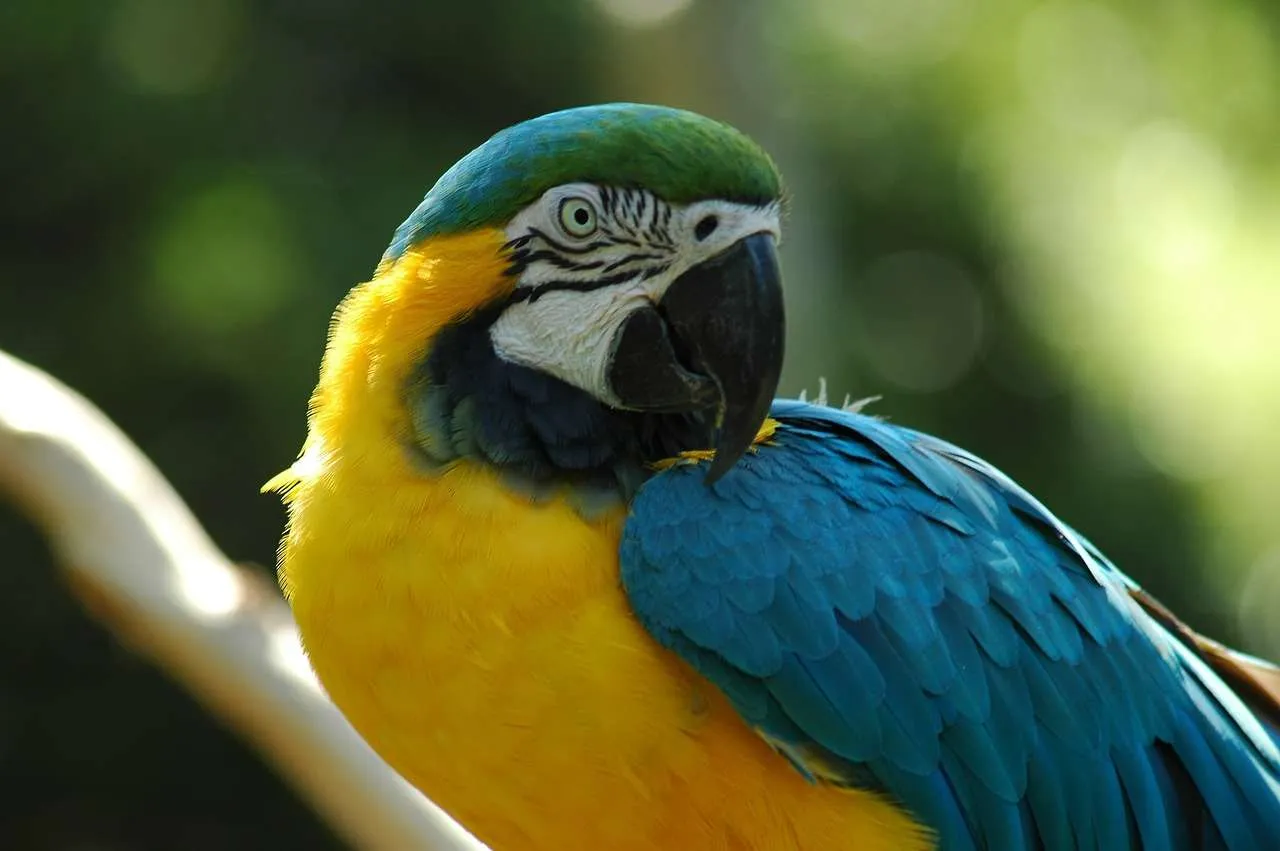Keep your bird’s wings and nails clipped at all times. Nails that are too long can get caught in anything and break, causing, at the very least, pain, and at worst, bleeding (which can be fatal if not stopped). Birds only have a few tablespoons of blood in their veins, and any bleeding can be life-threatening. If you can’t clip your bird’s wings and nails, your vet can do it for you.
Nail Clipping
To clip nails, you will need an assistant. You will also need fingernail clippers, or for large birds, a pair of dog toenail clippers, and some powdered coagulant in case of bleeding. In an emergency, cornstarch or flour will work. Have someone hold the bird in such a manner that it can’t flap its wings or get loose (be careful not to hold the chest too hard-birds need to expand their ribs to breathe. If you hold too tight, the bird will suffocate!)
Nail clipping can be made much easier if you can teach your bird to lift one foot at a time.
Each toenail has its own blood vessel inside. When you cut, take small nibbles rather than one large cut, to avoid cutting the blood vessel. Stop immediately if you get blood, and apply the styptic powder. If the nail is very long, and you cannot see the blood vessel through the nail in bright light, cut a small bit off the tip every few days. This gives the vessel a chance to recede between cuts. If your bird bleeds, watch it closely for a few hours to be sure all the bleeding has stopped before you leave it alone.
Wing Clipping
All pet birds should have their wings clipped for several reasons:
- There are too many hazards in a house for flighted birds.
- Every door and window in your house is a chance for that bird to escape to the outside (intentionally, or accidentally).
- Wing clipping helps control your bird’s behavior, nobody likes to have to keep getting the bird down off the chandelier (birds will naturally seek out the highest place to perch, wherever they are). Some flighted birds develop a “better than you” attitude and begin to bite or exhibit other unpleasant behaviors.
- Once your bird realizes it can’t fly, it will rely on you to take it to see interesting things (and back to its cage to eat and drink), and this will reinforce your bond with the bird.
Before trimming, check your bird’s wings for blood feathers. A blood feather is a new, growing feather, which has its own blood supply. The feather shaft (base) is cloudy and purple or red colored, and the feather is all or partly covered with a white, paper-like sheath. If cut, this feather will act as a straw to pump blood out of the bird.
The only way to stop a blood feather from bleeding once it starts is to pull it out with needle-nosed pliers (from the bottom of the feather, not the end). If your bird needs its wings clipped, and has blood feathers, you can carefully cut the feathers around the blood feather, and go back later to cut the blood feather when it grows in.
Wing-trimming is easiest with two people, one to hold, and one to cut. Hold the bird securely for nail-clipping, and gently extend one wing. Trim off the first seven to ten long feathers up to the bottom of the next layer. I find it easier to cut one feather at a time, rather than try to make just one long cut. Be as neat as you can in your trimming so the bird will be able to fold its wings. Finish one wing, then readjust the bird so you can trim the other wing the same way. Always clip both sides, a bird with just one wing clipped can only fly in a circle, and cannot land in a controlled manner. Your bird could get hurt that way. Again, your veterinarian can clip wings for you if necessary.
Your bird will molt (lose feathers) almost continually, either a few at a time or lots at once. When it molts the cut wing feathers, they will grow back full length and will need to be trimmed again.
Check your bird’s wings regularly for new growth. Looking in the bottom of the cage for molted cut-off feathers is a good warning of new feathers to come. It takes about three weeks for a wing feather to grow in completely.
